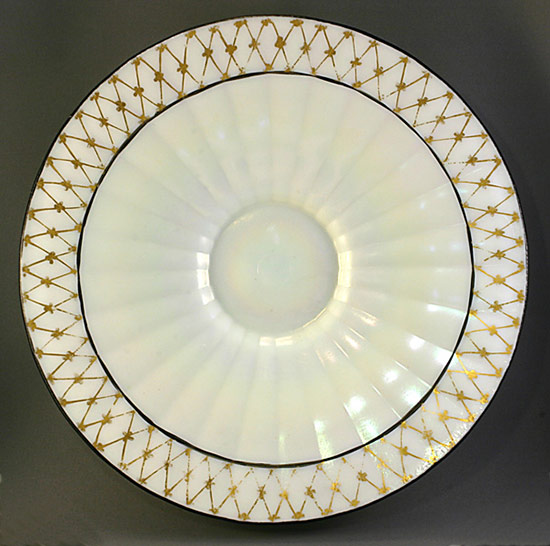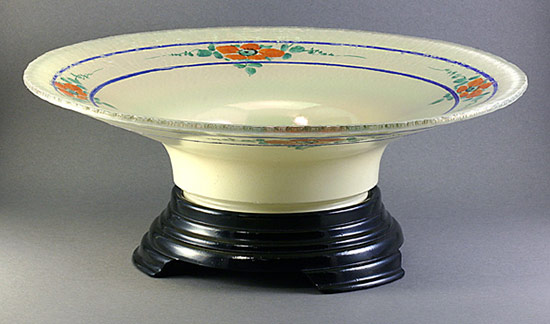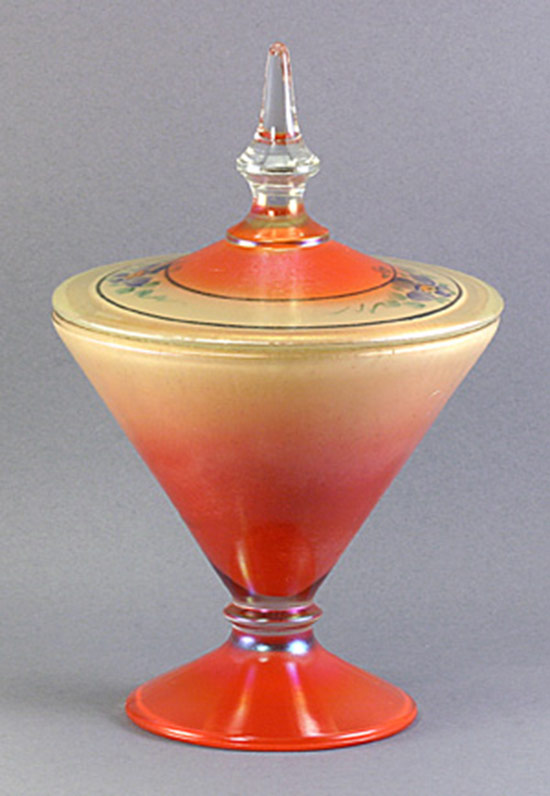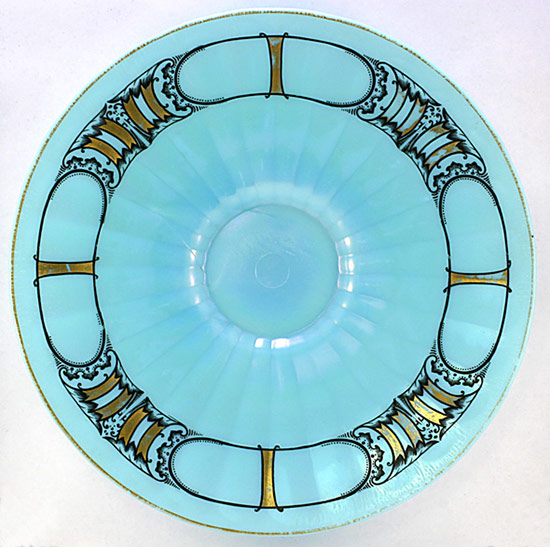Stretch Tuesday again! BugDoc Dave here and I’m going to continue with some information on decorated stretch glass pieces. When I was last on, I gave some examples of cut, acid etched and glue chip decoration. Today I want to discuss enameled pieces. Enamel decoration was fairly common on early carnival pitcher and tumbler sets, but most carnival bowls and plates lack such decoration. My personal belief is that adding enamel decorations to stretch glass was something done later in its production. When we discuss enamel decoration, it is obvious that there was factory applied enamel and hobbyist applied enamel. It appears that most of the factory-applied enamel was fired on. Special enamel that could take heating in a decorating oven or lehr was used to adhere the paint. The problem with enamel decoration is that the paint can chip or rub thin with excessive cleaning. When an inexperienced collector gets one of these pieces, they may try to scrub off the remaining enamel or try to use a paint remover. The results are usually a disaster as the enamel will leave a distinctive shadow on the glass which can’t be removed. Glass painted by an individual crafts person usually wasn’t fired on and this enamel is even more prone to chipping, even flaking off over time. In most cases, this enamel can be removed with paint remover, but again, there may be some shadow of the pattern that remains on the glass. My usual recommendation is to not mess with decorations on stretch glass unless you are willing to ruin the piece! Remember, what may be ugly to you may be what another collector really loves. There are folks who specialized in collecting decorated pieces!
There are two companies known for their overall enamel decorations on stretch glass – Lancaster Glass and U.S. Glass. Lancaster often applied floral decorations around plates and bowls, then further applied an overall enamel spray. This was done on crystal stretch so that you can see the decoration through the glass. Berry Wiggins (famous glass historian and book author) found the term “Ruby Lustre” in some advertising pieces about Lancaster Glass. The description was of crystal glass with the floral decorations and an overall red to orange enamel. These pieces are well known to collectors, but we also know of the same floral motif with a cream to white overall enamel or a green to yellow overall enamel. We don’t know the company names for these two latter effects, but stretch collectors refer to these as “white lustre” and “green lustre.”
U.S. Glass made two lines that are famous for their over-all effect. One was called Cumula which looks like clouds in green and white applied again to crystal stretch pieces. Bowls, comports, sherbets and mayo servers are known with this unique decoration. The other decoration was called Pomona which comes in two color schemes – stencil leaf motif in green covered with an overall yellow enamel or blue leaf motif covered with an overall purple enamel.
Fenton and Northwood seems to have also used enamel decorations and some of these can appear to be somewhat crude by industry standards. Most of Fenton’s pieces with enamel are fan vases. These can appear as rather deco-style designs. Fenton also used sterling silver enamel decorations in the forms of a sailing ship, flower basket or floral wreath. The silver decorations are usually heavily tarnished and will appear black today. Use care when polishing these as the silver application is very thin and can be polished off to leave only an outline behind!
Most of Northwood decorations occur on their covered bonbons and plates. This decoration most often occurs on their opaque pieces, especially the rare milk-glass pieces.

When Fenton resumed making of contemporary stretch glass, they had a large decorating shop with many expert enamel painters. So, many of their modern pieces are heavily decorated, usually with floral motifs. That will be a topic for a future article! For now, if you have enamel decorated carnival or stretch glass, show us your treasures! This is a topic rarely discussed!










